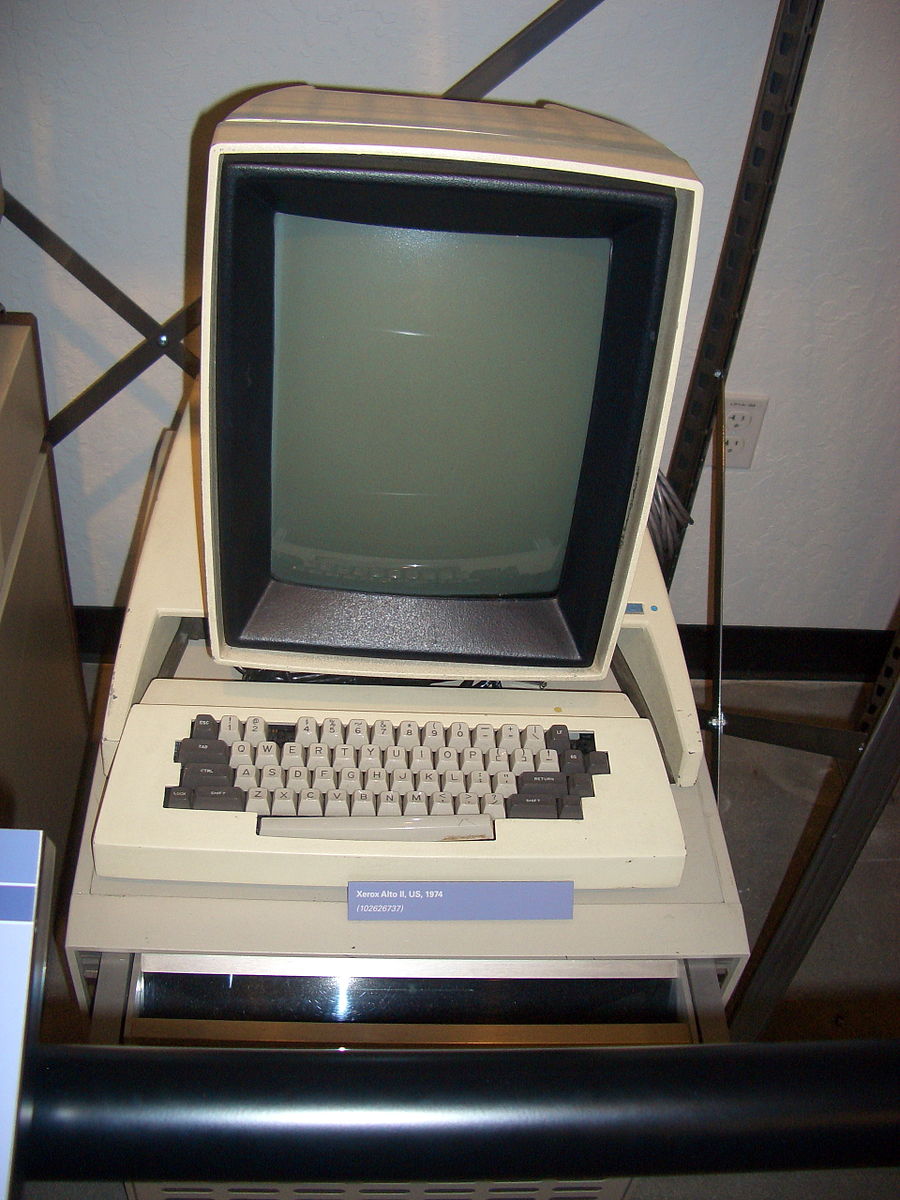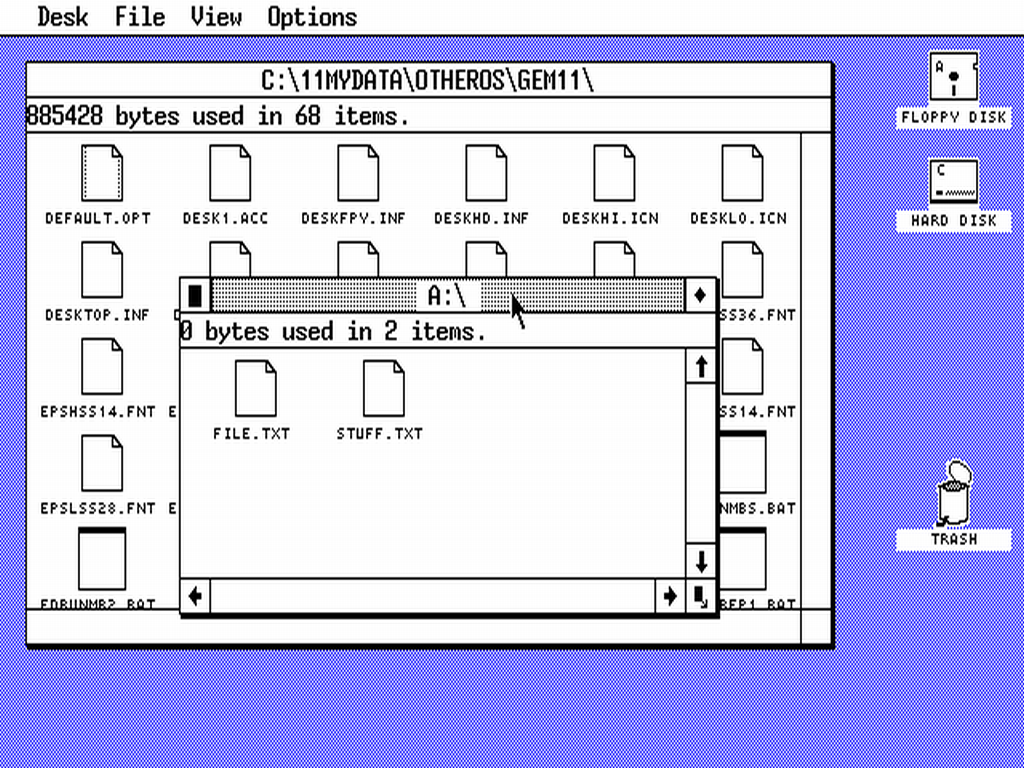Graphical User Interface
Xerox Alto

In the 1970 the PARC, Palo Alto Research Center, was founded by Xerox. Many important people came to the PARC to work on different kind of projects. One of their first products was the Alto: completed in 1973, the Xerox Alto was the first computer to have a mouse and a graphical interface, inspired by Engelbart's oN-Line System. The display had the same size and orientation of a normal sheet of paper, and used a grid of bitmapped pixels for the display. The graphical component was minimal: it only had boxes and text as elements and it used the Bravo, a software developed to show different kinds of fonts and text sizes on the display.
The Alto was never sold to the public, even though in 1981 Xerox started selling the Xerox Star, which had a lot in common with the Alto.
Apple Lisa and Macintosh

Apple, inspired by the work of the PARC engineers, decided to create its own GUI. In 1983 the Apple Lisa came out. While it had a lot in common with the Xerox Alto, the Lisa had implemented other functions, like icons, which were missing in the Xerox, a single button mouse which utilised a double click to open applications, and the click and drag.
Then, in 1984, the Macintosh hit the market. It was a success: even though it wasn't the first computer to have a graphical user interface, it was much cheaper than its competitors. The arrival in 1986 of Aldus PageMaker for the macintosh and the color displays of the Macintosh II amplified the success of Apple's products.
Graphical Environment Manager

Created by Digital Research Inc., the GEM was the successor of the GSX, a graphic library whose purpose was to permit to run graphic applications on different machines that supported it. Using GSX as a basis, GEM was supposed to be a program which permitted to have a complete graphical user interface on personal computers.
The first version of the GEM, GEM desktop 1.0, came to the market in 1985. It was compatible with CGA and EGA displays, and for some machines an 8-bit color version was also available. Although it was only supposed to work on IBM machines, because of a lot of complaints this limitation was soon removed. Not much time later, Apple sued DRI because of the strong similarities between GEM and the Apple products (namely Lisa and Macintosh).
As an answer to Apple, in 1986 the second version came out, called GEM desktop 2.0. This version had graphical differences compared to the older version, to solve the problem of the similarities with its competitors. This version though also had other improvement, like bug fixes and the addition of VGA to the list of compatible displays. The last commercial version of GEM, 3.0, came out in 1988, bringing some pre-included applications and a general performance upgrade.
External Links
- [Visited on 06/11/2014] Image taken from Wikipedia
- [Visited on 06/11/2014] Image taken from Wikipedia, fair use intended
- [Visited on 06/11/2014] Image taken from Wikipedia
- [Visited on 06/11/2014] Graphical User Interface on Wikipedia
- [Visited on 06/11/2014] GUI - graphical user interface
- [Visited on 06/11/2014] Graphical User Interface Timeline
- [Visited on 06/11/2014] A History of the GUI
- [Visited on 06/11/2014] The Real History of the GUI